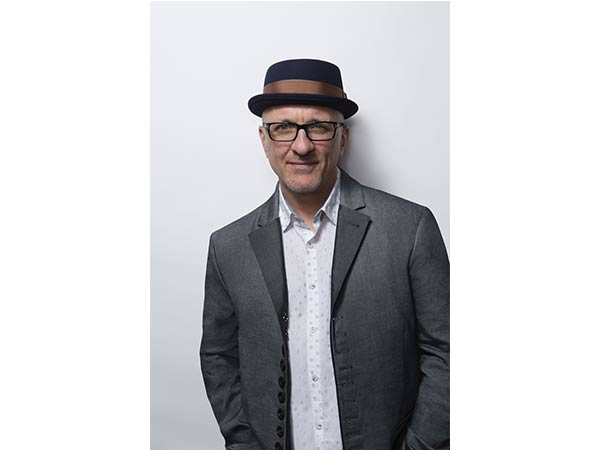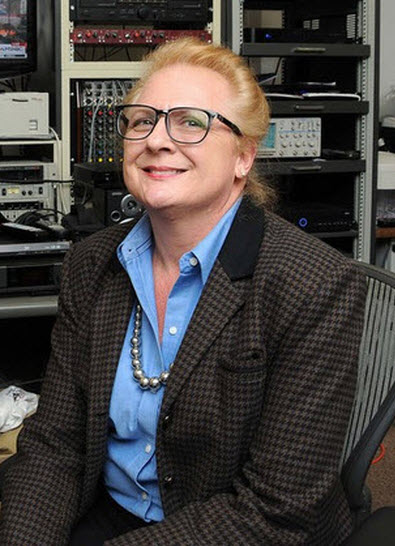News - Advertising
Ad Execs on the Campaign Trail… Storytelling, Social Media and Negative Advertising: the Creative Process of Political Advertising
October 11, 2016
.jpg) Advertisement
Advertisement
With the 2016 US presidential debates in full swing and only 29 days until the election, the media is saturated with the presidential candidates pitching their own political brand. Candidates’ ads passionately push their personalities and policy points to compete for a stronger position in the polls.
Whether the candidates are selling themselves in a print ad, commercial, a YouTube video, tweet or an Instagram post delivered to your Smartphone, politicians rely on a host of advertising mediums to reach constituents. Candidates strategically use media to pitch their personal strengths and their bigger-than-life personalities while aggressively exposing their opponent’s weaknesses, and they recruit the best and the brightest advertising creatives to craft their message.
All brands advertise and utilize storytelling to engage consumers, politicians are no exception. What tactics do the creative geniuses behind the political candidate’s ads take when crafting a successful political advertising campaign? New York Festivals International Advertising Awards asked several top industry creatives for their insights on the art of creating successful political advertising.
 “Successful product advertising is based in storytelling. Building a brand story is very compelling and that is what makes consumers develop genuine affinity for a product, done successfully the brand is able to have a genuine role in the consumer’s life,” said Vida Cornelious, EVP/CCO, Walton Isaacson, USA “In political advertising, the brand story is the story of the candidate and what they will stand for during their tenure in office, so it’s a long term investment for consumers to buy into their proposition.”
“Successful product advertising is based in storytelling. Building a brand story is very compelling and that is what makes consumers develop genuine affinity for a product, done successfully the brand is able to have a genuine role in the consumer’s life,” said Vida Cornelious, EVP/CCO, Walton Isaacson, USA “In political advertising, the brand story is the story of the candidate and what they will stand for during their tenure in office, so it’s a long term investment for consumers to buy into their proposition.”
Bill Clinton campaign alum, David Angelo, Founder and Chairman of David & Golialth, USA, stressed that in political  advertising the product is a living, breathing and speaking brand with a higher level of importance than a bar of soap. “When you’re creating advertising for the potential next president of the free world, you can’t afford a misstep,” said Angelo. “You get one chance and the entire country is counting on you. So, you better make sure your message and the way you deliver it is spot on. It’s this sense of urgency and importance that I apply to all the accounts I touch.”
advertising the product is a living, breathing and speaking brand with a higher level of importance than a bar of soap. “When you’re creating advertising for the potential next president of the free world, you can’t afford a misstep,” said Angelo. “You get one chance and the entire country is counting on you. So, you better make sure your message and the way you deliver it is spot on. It’s this sense of urgency and importance that I apply to all the accounts I touch.”

Advertising strategies vary according to available resources and the goals of the brief. According to Joe Fuld, President of the Washington D.C. based advertising agency, The Campaign Workshop, “There are three resources in a political campaign: people, time and money,” said Fuld. “The fundamental challenge of working on a political campaign is harnessing resources that are limited and communication to voters with those limited resources.”
Creative strategists need to be agile when working with a political brand, new directives can be ordered based on the success of a  speech, or the results of a poll. Valerie Graves, Consultant on Clinton/Gore ’92 campaign and recognized expert in all facets of multicultural advertising added, “It’s different in several ways, one is that you don’t have the same kind of time restraints that you have when you’re doing product advertising, but also your target audience is essentially every adult, every potential voter,” said Graves. “Everything is very fast moving. When I worked on Bill Clinton’s campaign, we had time upfront to develop a campaign, but after that it was almost minute by minute responses to advertising, there were always nightly focus groups and we could tune on a dime,” noted Graves. “It can be pretty challenging from a timing standpoint to do really good work under those circumstances”
speech, or the results of a poll. Valerie Graves, Consultant on Clinton/Gore ’92 campaign and recognized expert in all facets of multicultural advertising added, “It’s different in several ways, one is that you don’t have the same kind of time restraints that you have when you’re doing product advertising, but also your target audience is essentially every adult, every potential voter,” said Graves. “Everything is very fast moving. When I worked on Bill Clinton’s campaign, we had time upfront to develop a campaign, but after that it was almost minute by minute responses to advertising, there were always nightly focus groups and we could tune on a dime,” noted Graves. “It can be pretty challenging from a timing standpoint to do really good work under those circumstances”
“When most folks think of elections, they think of the massively funded presidential campaigns,” added Fuld, “but the average political campaign operates on a shorter timeline with a lot fewer resources.”
Social media has exploded amongst brands. Mastering social media has changed the way candidates persuade, connect and leverage the power of the people during the election cycle. In the Adweek blog, Social Times, Borell Associates projected that political advertising is estimated to hit a record $11.4 billion, up 20% from 2012, and that Digital Media will break the $1 billion level for the first time in 2016.
Previously political ad campaign spends were secured in traditional media, TV and radio. Forbes blogger Irfon Watkins, CEO/Founder of Coull, mentioned that in 2008 Barack Obama understood that he needed to look beyond traditional media to secure the youth vote, citing that Obama spent 10% of his paid media budget on digital advertising totaling $8 million, $6.5 million more than John McCain spent on his campaign. Obama upped the percentage in 2012 by 15%.
“The onset of technology/social media totally changed the game and upped the ante. 2006-07 Obama campaign marked the pinnacle of galvanizing and creating a movement via social media,” said Cornelious. “That was by far a game changer campaign in so many ways. It gave consumers a voice and allowed them to be heard and responded to in real time. The backbone of that campaign was in social media.”
Valerie Graves compared the use of social media by the Obama campaign as “almost a stealth weapon, no one was prepared for that, it had never been done before.”
“With the exponential growth of social channels, brands have to be more authentic than ever,” said Angelo. “You have to be cognizant of every single thing you say or do or the public will call you out. At the same time, there’s greater opportunity to deliver a grass roots message on a massive scale. Once you reach those advocates, you can amplify your message even further.”
Cornelious remarked that in years past, it was posters and local visits to churches and schools for rallies. “Now a rally or debate can be seen by millions in a live feed on FB. And the audience can connect over any issues that arise and react to the message in real time,” said Cornelious. “Our social networks now have all the power to sway opinion, not the candidate.”
Joe Fuld explained that advertising in politics has changed a lot in his 25-year career. “Our ability to target voters has changed and so has the saliency of mediums,” said Fuld. “It used to be that by dominating only one medium you could reach your core audience… we now have to use multiple mediums to break through to them.”
Mud-slinging is part of most political advertising campaigns, and 2016’s presidential campaign has had its fair share of negative advertising. Donald Trump introduced a series of on line ads this summer, some of which took “jabs at Ms. Clinton including one …featuring the rallying cry, ‘Let's stop Crooked Hillary together,’" according to an Ad Age story written July 1st. That same article mentioned that “the Trump camp recently has also relied on text messaging to paint Ms. Clinton as a liar who "broke the rules and lied about it." The question remains, is there a positive side to negative ads?

The Oklahoma University Political Communication Center Julian P. Kanter Political Commercial Archive is the largest most comprehensive collection of political advertising in the world. Lisa Henry, Curator and Archivist had this to say about negative advertising “Everyone says that every campaign year is the most negative one we’ve ever seen. It’s true of every campaign even before radio and TV; you can even find pamphlets from Lincoln’s days.”
The Political Commercial Archive houses a copy of “Daisy,” a revolutionary ad for Lyndon B. Johnson’s 1964 campaign against Barry Goldwater created by Doyle Dane Bernbach (DDB). The commercial begins with a 3-year old girl counting the daisy petals she is plucking, in the background the audio plays out a mission control countdown. As the countdown ends, the camera zooms into the iris of the young girl’s eye and the viewer sees a nuclear blast and a mushroom cloud. According to Robert Mann, political historian and former U.S. Senate press secretary, “Half a century later, we live in the world of negative political advertising that Daisy Girl pioneered.” Ms. Henry refers to the 1964 campaign as “a tipping point and that it remains one of the most evoking ads ever. It opened the door to a lot of the shock and awe advertising.”
Is there a positive side to negative advertising? Are ads that point out the flaws of a candidate’s opponent a necessary evil in the political advertising game, and does the negative ad elicit the desired response, rallying the candidate’s base and moving the undecided moderates? The American Psychology Association comments in their article on political advertising that psychologists and political scientists are studying campaign ads and coming up with surprising results — finding “negative ads might create more thoughtful voters than positive ones…”
“I think the positive side to a negative ad, is the fact that there has to be truth in it in order to be considered negative. Those ads are done for the purpose of shedding light on the flawed character of a candidate,” said Cornelious. “So if there needs to be a negative ad, it should for sure be based in truth. Negative ads have stopping power as well. Depending on how the subject is presented, it can be impactful in swaying public opinion.”
“Having good opposition research and polling is important to crafting a contrastive message that resonates with voters,” commented Fuld. “You can’t win a campaign with just negative ads, you need to create a contrast - why vote for our candidate instead of the other. These days you need to do both to win.”
Political advertising archivist, Henry commented on negative political advertising campaigns: “Some will run for office saying ‘I’m not going to run on negative campaigns’…but they usually don’t win.”



.jpg)





.jpg)




